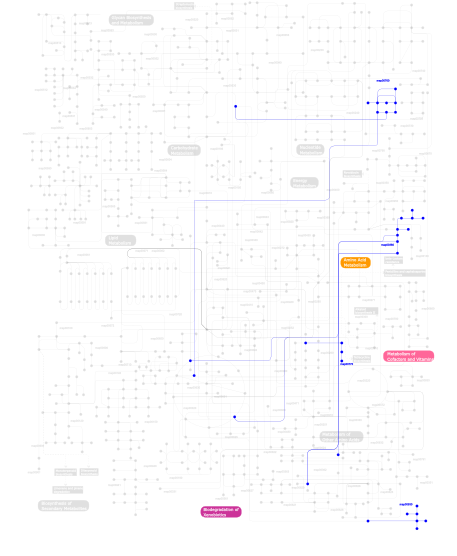ZnF_UBPUbiquitin Carboxyl-terminal Hydrolase-like zinc finger |
|---|
| SMART accession number: | SM00290 |
|---|---|
| Description: | - |
| Interpro abstract (IPR001607): | Zinc finger (Znf) domains are relatively small protein motifs which contain multiple finger-like protrusions that make tandem contacts with their target molecule. Some of these domains bind zinc, but many do not; instead binding other metals such as iron, or no metal at all. For example, some family members form salt bridges to stabilise the finger-like folds. They were first identified as a DNA-binding motif in transcription factor TFIIIA from Xenopus laevis (African clawed frog), however they are now recognised to bind DNA, RNA, protein and/or lipid substrates [ (PUBMED:10529348) (PUBMED:15963892) (PUBMED:15718139) (PUBMED:17210253) (PUBMED:12665246) ]. Their binding properties depend on the amino acid sequence of the finger domains and of the linker between fingers, as well as on the higher-order structures and the number of fingers. Znf domains are often found in clusters, where fingers can have different binding specificities. There are many superfamilies of Znf motifs, varying in both sequence and structure. They display considerable versatility in binding modes, even between members of the same class (e.g. some bind DNA, others protein), suggesting that Znf motifs are stable scaffolds that have evolved specialised functions. For example, Znf-containing proteins function in gene transcription, translation, mRNA trafficking, cytoskeleton organisation, epithelial development, cell adhesion, protein folding, chromatin remodelling and zinc sensing, to name but a few [ (PUBMED:11179890) ]. Zinc-binding motifs are stable structures, and they rarely undergo conformational changes upon binding their target. This entry represents UBP-type zinc finger domains, which display some similarity with the Zn-binding domain of the insulinase family. The UBP-type zinc finger domain is found only in a small subfamily of ubiquitin C-terminal hydrolases (deubiquitinases or UBP) [ (PUBMED:9759494) (PUBMED:9409543) ], All members of this subfamily are isopeptidase-T, which are known to cleave isopeptide bonds between ubiquitin moieties. Some of the proteins containing an UBP zinc finger include:
|
| GO function: | zinc ion binding (GO:0008270) |
| Family alignment: |
There are 5721 ZnF_UBP domains in 5106 proteins in SMART's nrdb database.
Click on the following links for more information.
- Evolution (species in which this domain is found)
- Metabolism (metabolic pathways involving proteins which contain this domain)
- Structure (3D structures containing this domain)
- Links (links to other resources describing this domain)





























